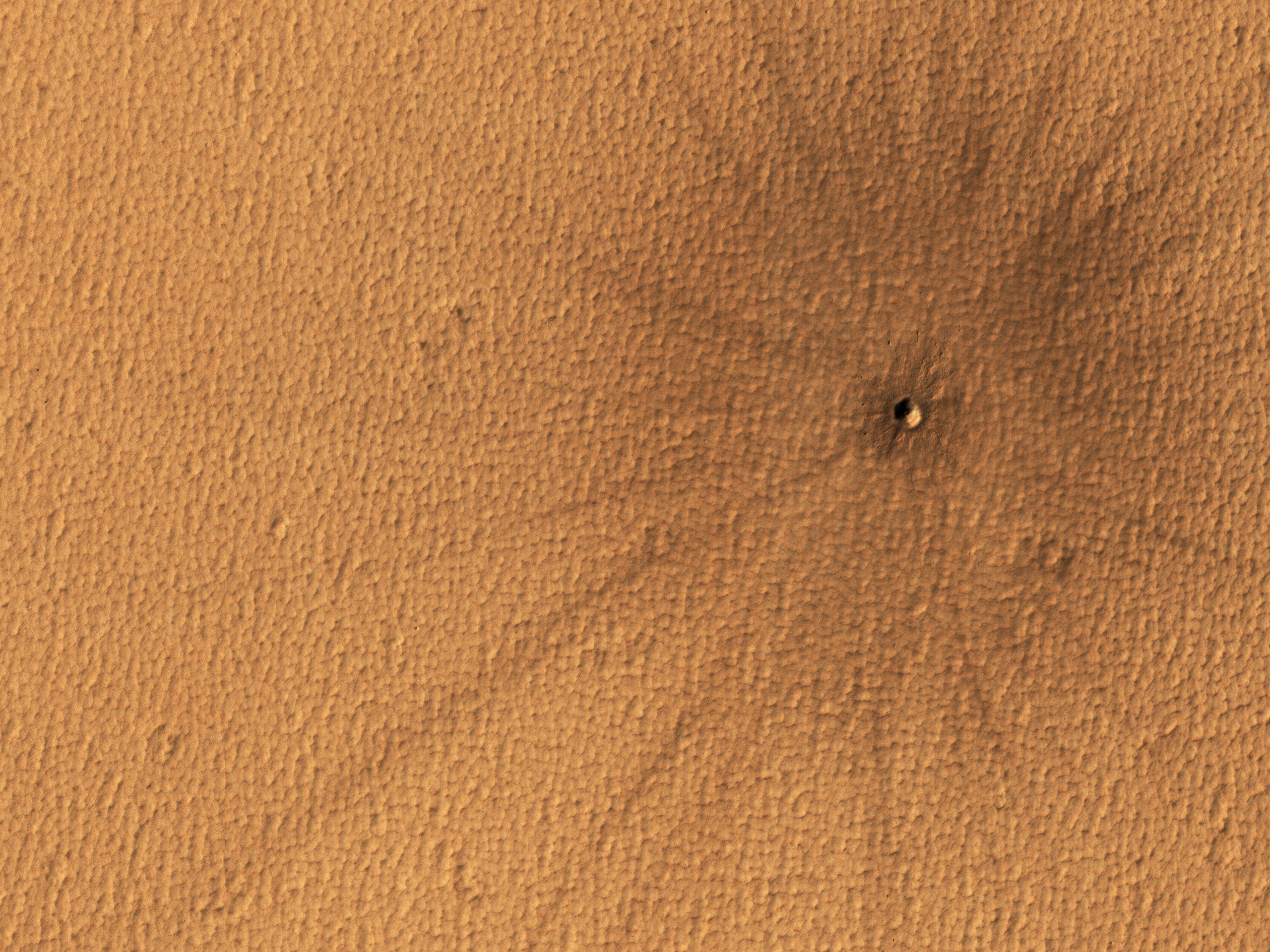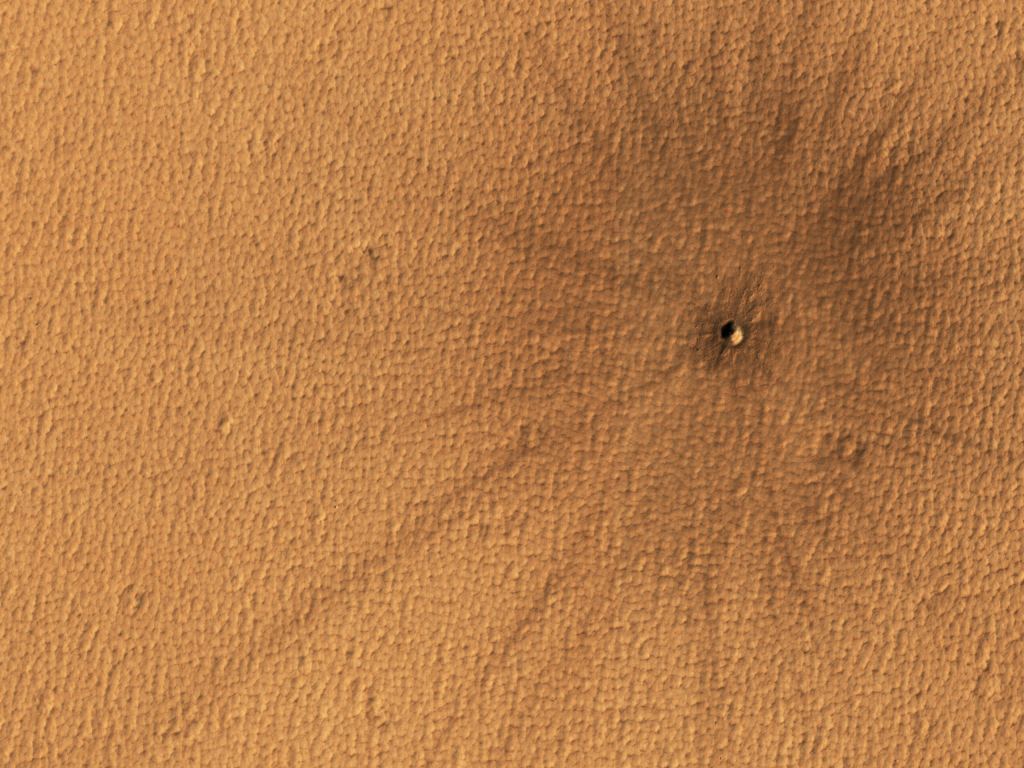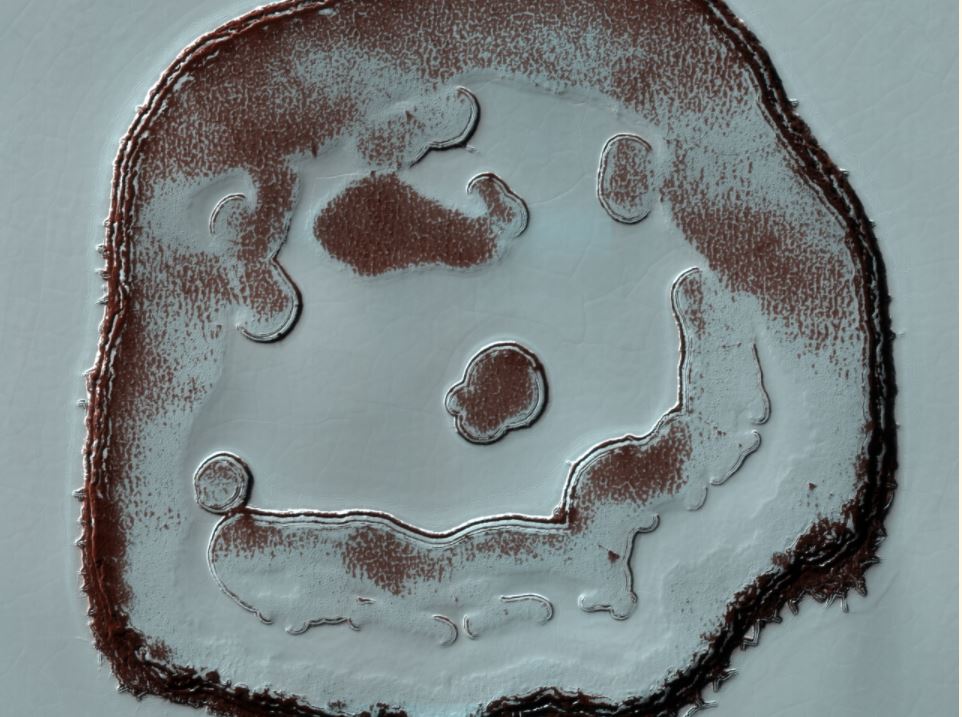There will be all sorts of risks for any future colonists on Mars, such as extreme weather and temperatures, radiation, and the human physiological problems associated with living in with decreased gravity. But another issue means colonists on Mars will have to be on a constant lookout above their heads.
While Mars and Earth are both hit by space debris regularly – dust, small rocks and bigger meteoroids -- on our planet, meteors usually vaporize in the atmosphere.
"On Mars however, with a surface pressure 1/100th that of the Earth, the impactors generally make it to the surface," says the team from the HiRISE camera on the Mars Reconnaissance Orbiter (MRO).
HiRISE (High Resolution Imaging Science Experiment) on board MRO took this image of a small impact crater that was formed sometime in the last 5 years. Although the crater is small, the rays of ejecta thrown out by the impact are easy to spot, stretching out almost a kilometer.
How often does this happen on Mars? A 2013 study estimated that the Red Planet gets womped by more than 200 small asteroids or bits of comets per year, forming craters at least 3.9 meters (12.8 feet) across. Like on Earth, even a small impact would wreak havoc on any Martian settlement. But impacts of this size on Mars happen more frequently.
Related: What will it take to feed a million people on Mars?
Mars is about half the size of Earth by diameter and the thinner air surrounding the planet has an atmospheric volume less than 1% of Earth's. The atmospheric composition is also significantly different: primarily carbon dioxide-based, while Earth's is rich in nitrogen and oxygen.
MRO has been in orbit of Mars since 2006, and one of the benefits of having a spacecraft in orbit around another planet for several years is the ability to make long-term observations and interpretations. HiRISE images over the years have detected numerous "fresh" craters that have formed, and since it has repeatedly imaged several regions on Mars, scientists can study the before-and-after images to calculate the impact rate based on new craters.
The 2013 study showed that the rate for how frequently new craters are formed, which are at least 3.9 meters in diameter is about one each year on each area of the Martian surface roughly the size of the U.S. state of Texas.
Just one more thing that will be a challenge for anyone who dares to try and live on Mars.
See the original image and more details from MRO on the HiRISE website.
 Universe Today
Universe Today


